Ancistrus star: description and content
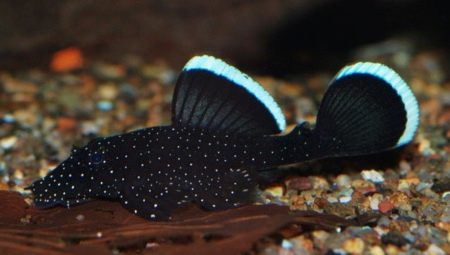
Star ancistrus is a good-natured catfish with an interesting color. It is also known under a different name - mint stuck. This is an excellent cleaner: it eats up food that has not been eaten by fish and cleans up plant deposits on decorative items. Star ancistrus will not only decorate the aquarium in an original way, but will also benefit all its inhabitants.
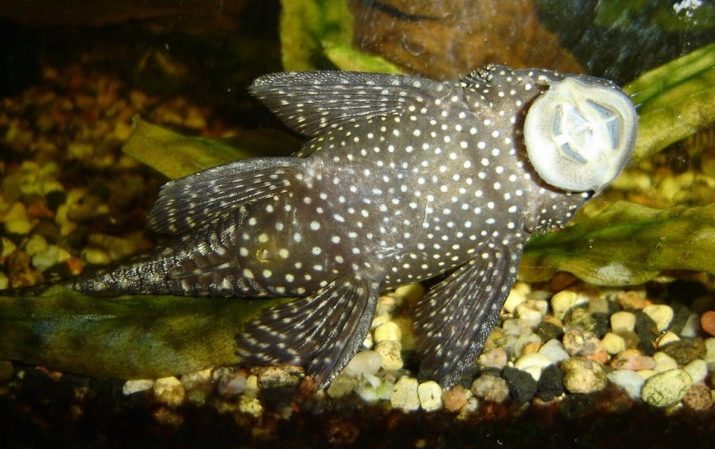
Characteristic
The first thing that catches your eye is an unusual color: a scattering of white specks on a black velvet belly. Such an extravagant color is associated with the starry sky, which is why the ancistrus got its name. The mouth is in the form of a suction cup, with the help of it the fish feeds on vegetative deposits formed on stones and decorative elements. There is a white stripe on the tail and fins, which fades with age.
The catfish grows in length up to 8 cm. The body is covered with strong plates and thorns that protect the fish from the encroachments of enemies. By nature, stellate ancistrus are peaceful, but clashes may occur among males. Other species of aquarium fish are ignored. They prefer nocturnal lifestyle, and during the day they often hide in thickets. They have a good command of the camouflage technique, they can freeze and stay in one position for hours.
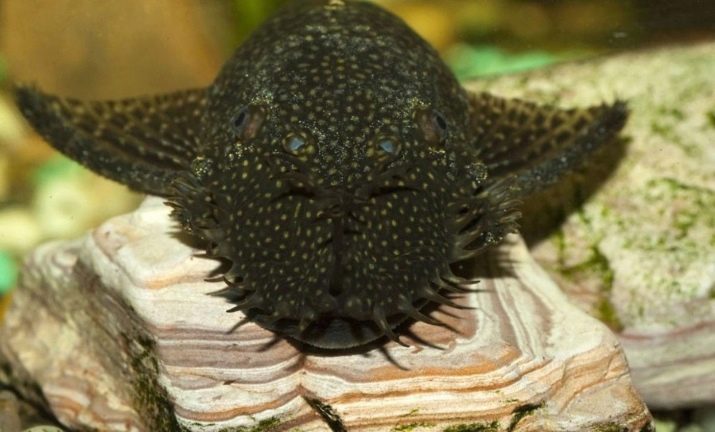
How to tell a male from a female?
In ancistrus stellate, sexual differences appear rather late. It is possible to determine the sex only when the individual reaches 1.5-2 years.
This is the main difficulty in breeding them, because they become sexually mature at the age of 8-12 months.
The main difference between a male and a female is the tentacles that are located on the fish's head. Tentaculae are elongated leathery processes in the form of peculiar thorns.In males, they are long and thick, covering the entire surface of the head, and in females they are rare and shortened, located mainly along the edges of the jaw. In addition, the shape of the male's body is more elongated, and the female has a rounder belly.
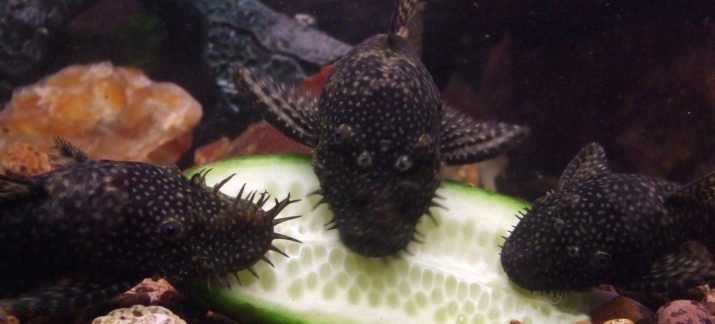
What types of fish do they get along with?
Ancistrus has a calm, good-natured character, they get along well with all types of non-aggressive fish:
- swordsmen;
- platies;
- gourami;
- lalius;
- scalars;
- zebrafish;
- neons;
- barbs;
- rainbows.
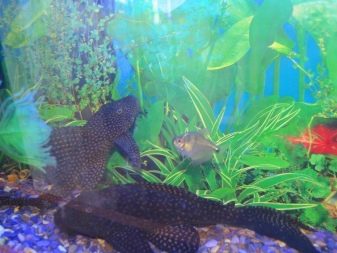
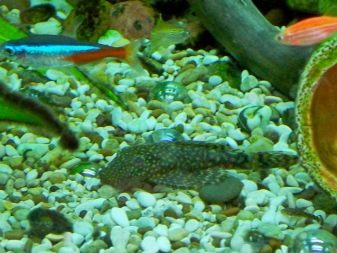
Some breeders keep ancistrus with predatory cichlids. This is permissible only if the catfish are quite large, or these two species of fish grew together from a young age.
Another important point to pay attention to: Ancistrus males can fight for territory or feud with each other. This happens with poor feeding and cramped housing. Therefore, in order to avoid conflicts, catfish should be provided with good care.
Care features
Among the ancistrus, this is the smallest species - star catfish will be comfortable in an aquarium from 50 liters. Although if you plan to keep several males, then it is better to choose a larger tank, and also take care of a sufficient number of shelters.
Catfish love to hide in grottoes, gorges and dense thickets, and if they are not enough, then males can quarrel.
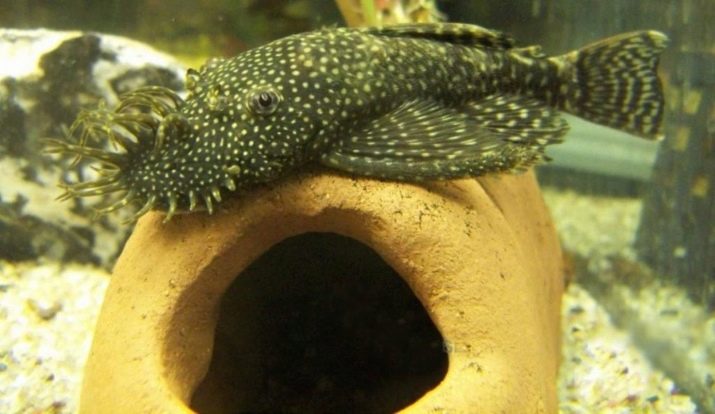
Algae with well-developed roots and dense leaves are chosen from plants. They are planted deep in the ground and pressed down with pebbles. The following aquatic plants are suitable:
- anubias;
- cryptocoryne;
- sagittariya;
- vallisneria.
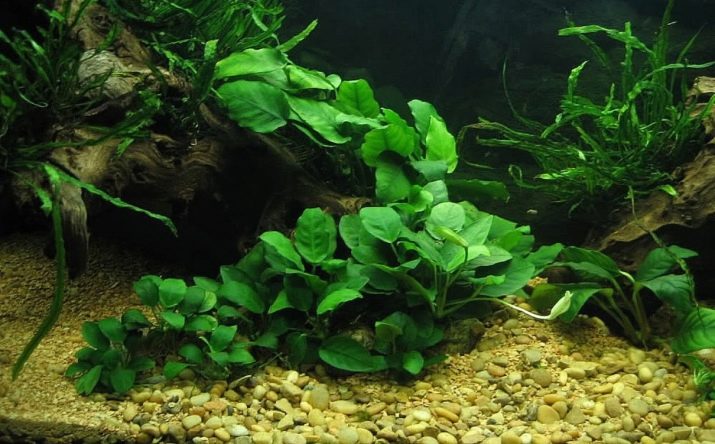
The bottom can be partially decorated with Javanese moss. It is not worth planting the aquarium completely, it is necessary to leave free space - areas with soil in which the catfish will dig. Sand and smooth pebbles are chosen as the soil.
Pebbles with sharp edges should be removed as the fish may be injured.
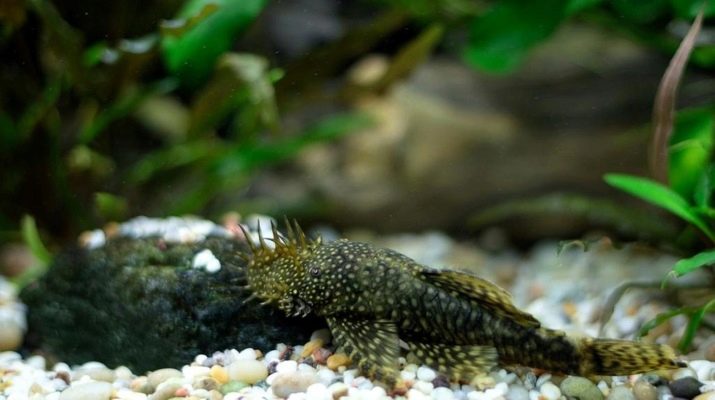
Ancistrus, unlike other fish, are not so demanding on water indicators. But its parameters must be within the following limits:
- temperature - + 20 ... 28 ° С;
- acidity - 6-7.5 pH;
- hardness - 5-20 ° dH.
Catfish are sensitive to environmental pollution, so the aquarium is equipped with an internal or external filter, as well as partially changing the water weekly. To do this, 25% of the liquid is drained and filled with clean, settled water. If the aquarium is new, then they wait 1 month until an ecosystem comfortable for fish is formed, and only then they carry out a change.
The water is completely changed only when the fungus or parasites spread. In this case, thorough disinfection of the entire aquarium and decorative elements is carried out.
For catfish, aeration of the water is desirable, especially in densely populated aquariums. But they do not need lighting, so the installation of lamps is not needed. If their neighbors are light-loving fish, because of which the aquarium is brightly lit, take care of secure darkened places for ancistrus, it can be bushes of plants, decorative houses and heaps of stones.
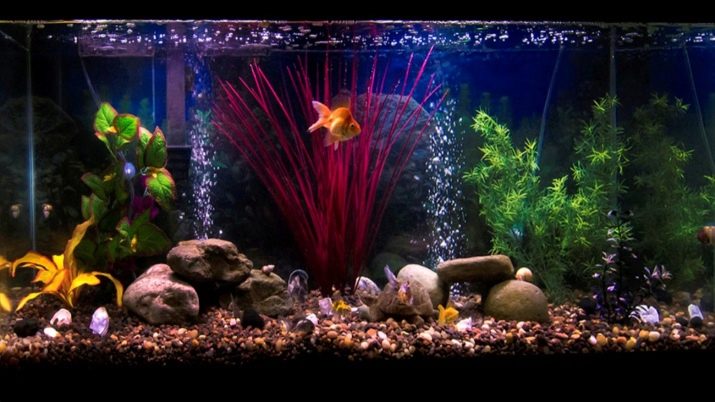
Feeding
Some aquarists are not serious about feeding a catfish, mistakenly believing that it has enough food leftovers from other fish that it finds in the ground. But this is not so, often fish swimming near the surface manage to eat all the food offered to them before it falls to the bottom, and the catfish remains hungry.
You should feed the catfish individually, do it in the evening in dim light. Stellate ancistrus are omnivorous, but their diet should consist of 70-80% plant foods. You can give:
- cucumber;
- carrot;
- zucchini;
- spinach;
- lettuce leaves.
Greens and vegetables are washed well, scalded with boiling water and, with the help of a tied weight, lowered to the bottom next to the ancistrus shelter.
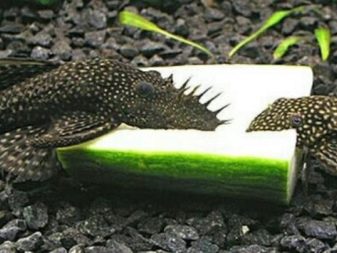
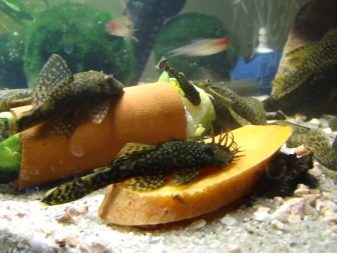
It should be noted that the adherent loves to eat wood, so several driftwood should be placed in the aquarium. Ancistrus will chew them with pleasure.
At the pet store you can purchase food for bottom fish. It comes in granules or tablets that sink well and sink quickly to the bottom. Such feeds are perfectly balanced, they contain vitamins, minerals and a plant complex.
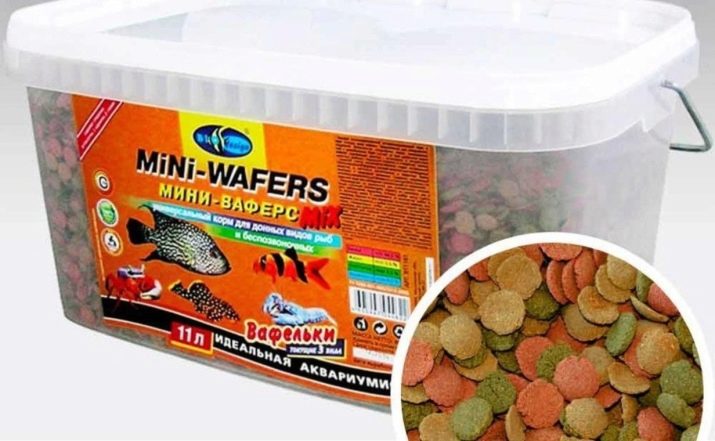
Do not mind ancistrus to feast on and live food. About once a week they are given bloodworms, brine shrimp, or tubifex.
Breeding
Catfish reproduce well both in the general aquarium and in a separate tank. In order to stimulate spawning, the environmental conditions are changed:
- lower the water temperature to +20 degrees Celsius;
- replace 70% of water with fresh water.
Such actions recreate the environment that forms in natural bodies of water during the rainy season. And the ancistrus living in the wild spawn at this very time. It is also necessary to improve the general conditions of keeping: more often turn on the supply of oxygen, feed well, and if the aquarium is too populated, put the male and the female in a separate spawning grounds.
Provide enough cover. Equip the bottom with various grottoes, deep shells and inverted shards. This is where the ancistrus will spawn. Special ceramic tubes can be purchased in stores; they are convenient to use if catfish breed in a common aquarium. At the end of spawning, in such a device, it will be possible to easily transfer the eggs to the jig. Do not forget to take the male, it will be he who will look after the future offspring.
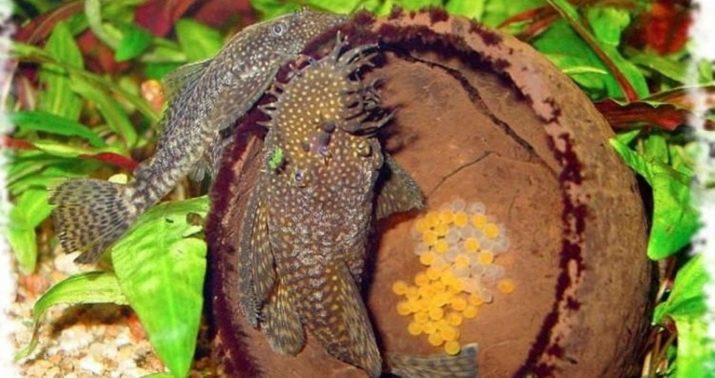
Ancistrus caviar is large, orange in color. The male takes care of her day and night: cleans, fanns with fins and protects from other people's encroachments. On the 4th day, the larvae hatch, which feed on the yolk sac. And after another 6 days, fry appear, at this time the male can be deposited in a common aquarium. Babies are fed live dust or specialized dry flakes. When the juveniles grow up and get stronger, adolescents are transplanted into a common aquarium.
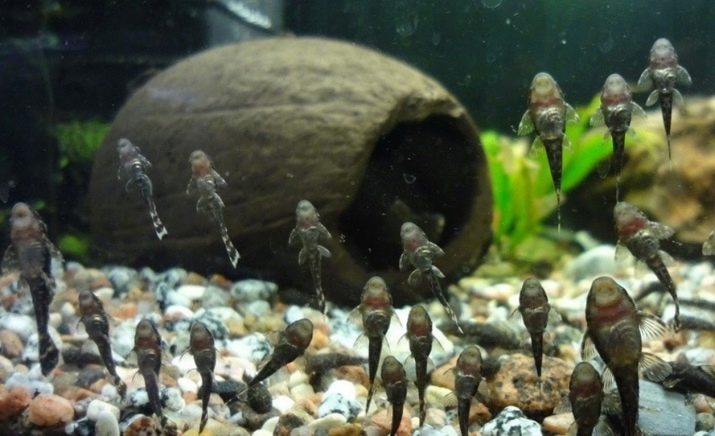
Diseases
Ancistrus stellate has pretty good health, but some problems sometimes arise. Let's designate the 4 most common ailments.
- Semolina (ichthyophthiriosis) Is the most common infection. The main symptom is a white coating on the body. The catfish refuses to eat and does not leave its hiding place. It is treated with preparations based on copper sulfate.
- Oodiniumosis. The fish itches on stones, and its abdomen is covered with a yellowish coating. It is treated with copper sulfate. Additionally, it is recommended to raise the water temperature by a couple of degrees, and do not turn off the aeration.
- Hypoxia. If a catfish often floats on the surface of the water in order to capture air by its mouth, then it does not have enough oxygen. This usually occurs when the aquarium is overcrowded and the water temperature is too high.
- Poisoning... In order to avoid it, it is recommended to periodically test the water for nitrates and nitrogen content. For this, special tests can be purchased at the pet store. In case of exceeding the norms, it is necessary to use conditioners that neutralize harmful substances.
Diseases occur most often when there are toxic substances in the water, as well as when feeding rules are not followed. Another reason is contaminated feed. If there are doubts about its quality, then pre-food worms and larvae should be frozen. With good care, ancistrus lives for a long time - up to 10 years. Healthy fish delight their owners with a beautiful color and interesting behavior.
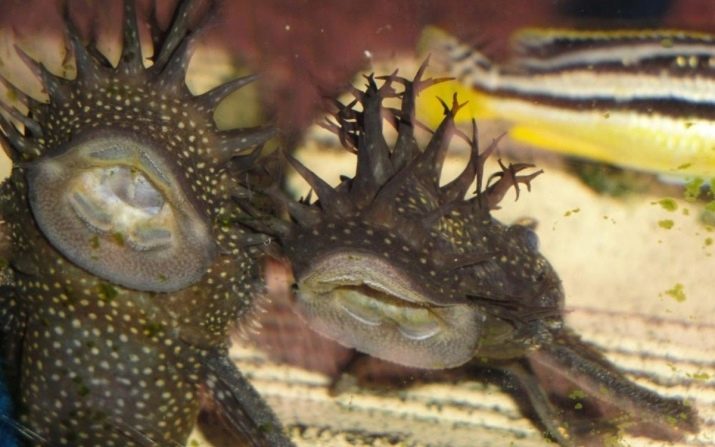
You will learn more about star ancistrus by watching the following video.








